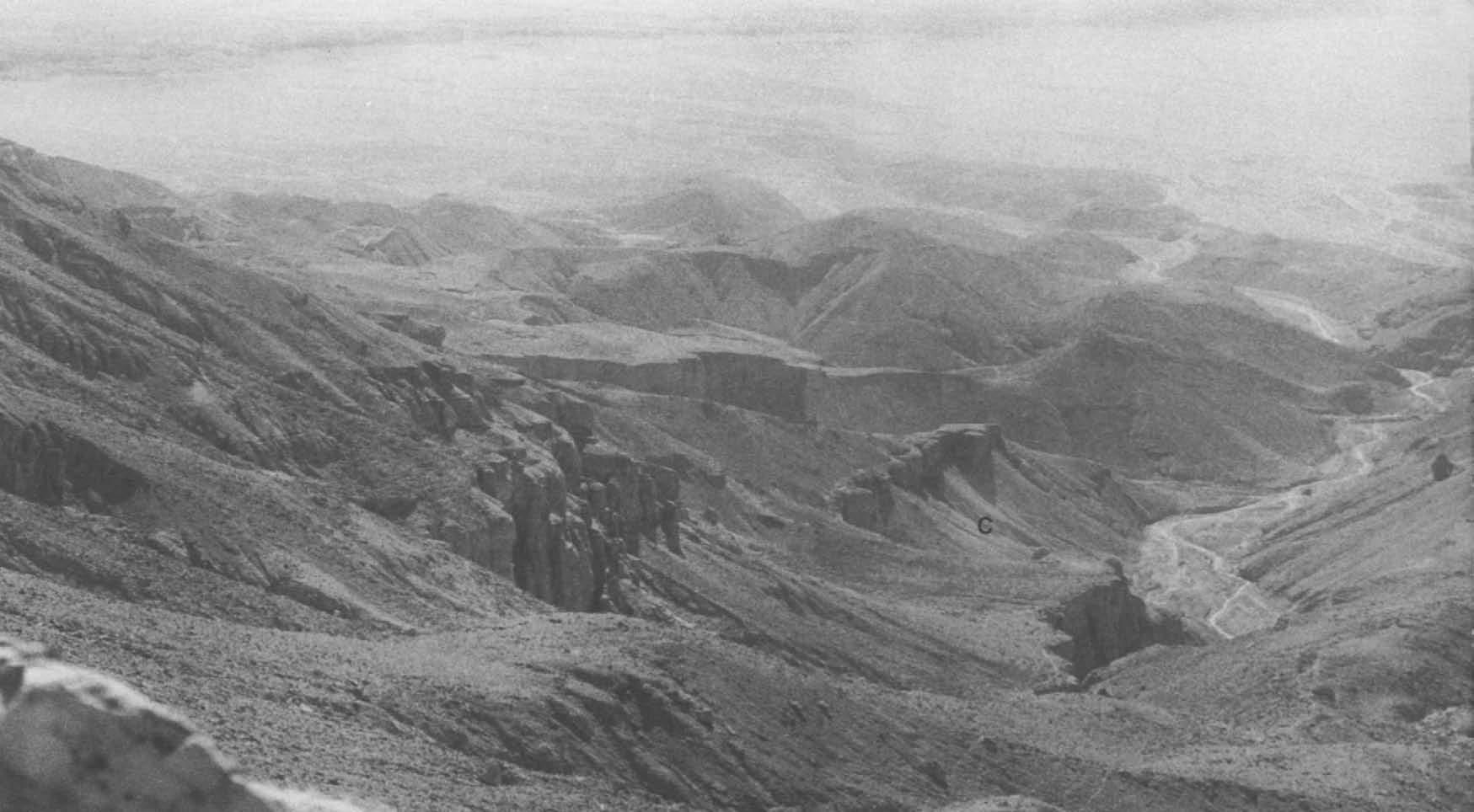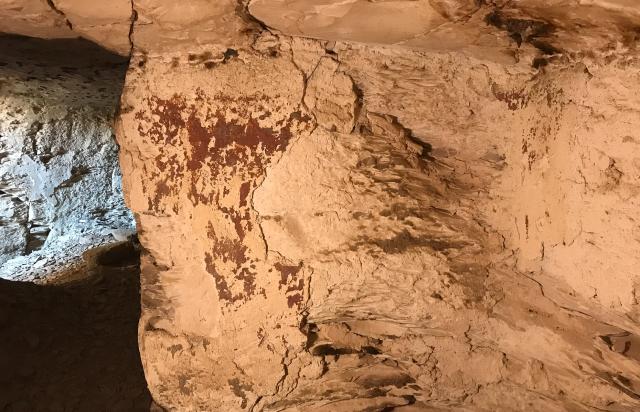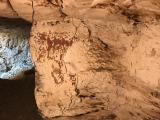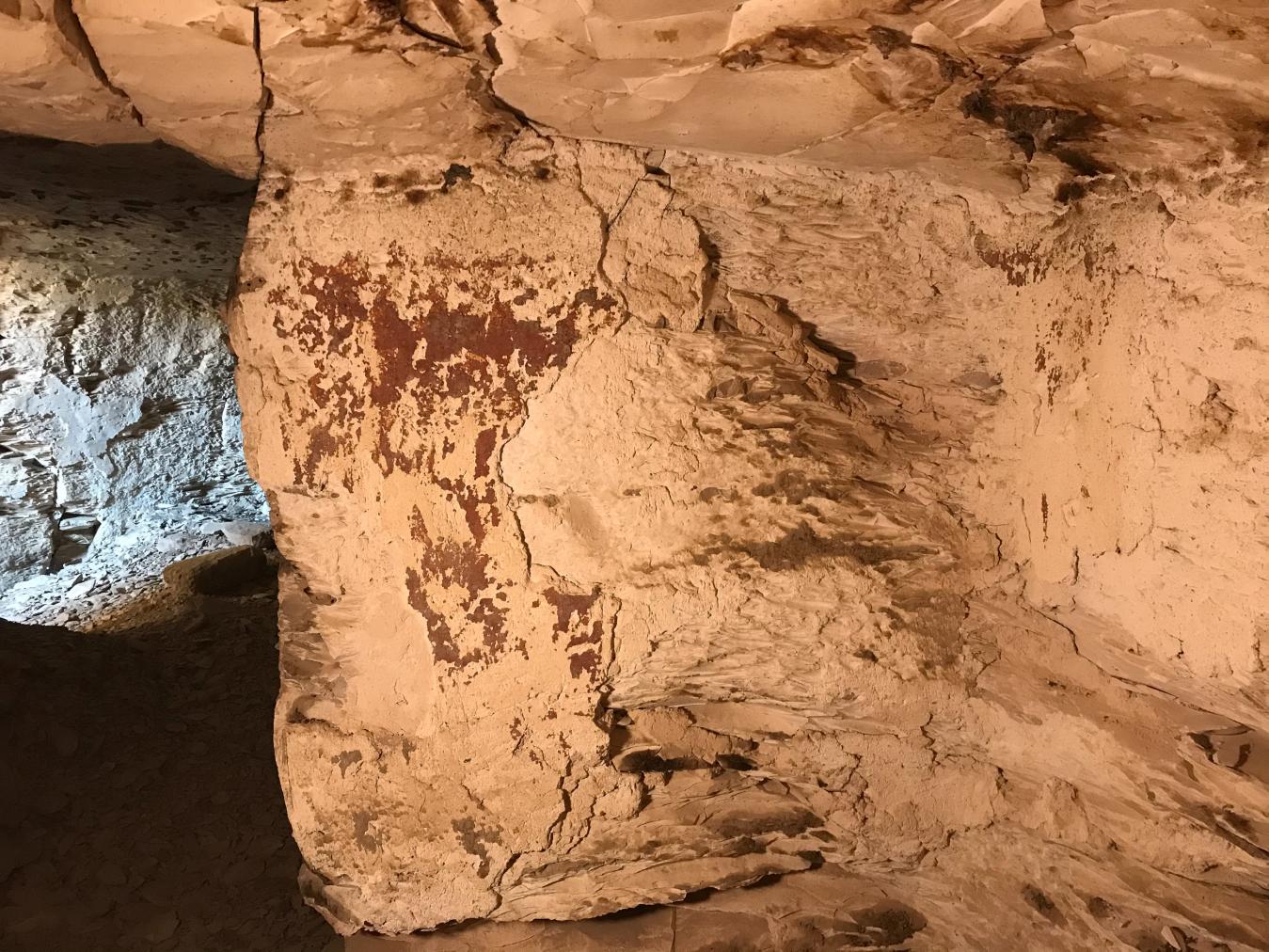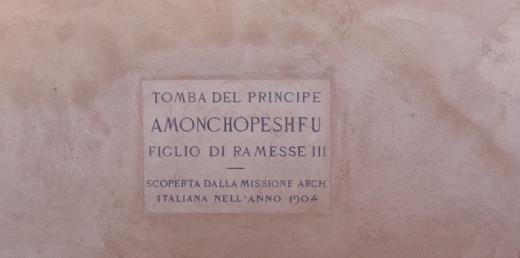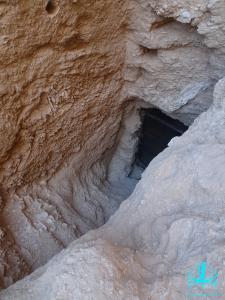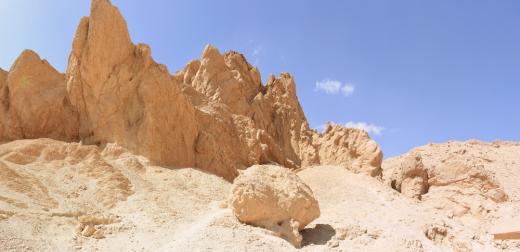Wadi C-1
Neferure
Entryway A
See entire tombA slightly bent, descending entryway was cut into in a natural fissure along an inner cliff face and opens into the northeastern corner of a large, roughly square chamber. There may have been Steps in the entrance, but there are no visible remains today. There is a fissure in the ceiling above the entryway.
Chamber B
See entire tombA large square chamber orientated perpendicular to the tomb's entryway. The ceiling in the eastern corner is broken and there are remains of plaster on the fractured walls.
Chamber C
See entire tombThis irregular chamber opens from the southern corner of chamber B and lies almost parallel to the entryway. It is orientated north-south. A low shelf is situated in the easter corner, next to the opening into chamber D. The walls in this chamber are fractured and there are remains of plaster.
Burial chamber D
See entire tombThis elongated chamber lies on axis with chamber C. There is a niche cut into the western wall and a roughly-cut shallow pit is situated in the floor at the southern end of the chamber. The walls are fractured and there are remains of plaster.
About
About
Wadi C-1 is located in a natural fissure along the inner cliff face of Wadi C, approximately 15m above the valley floor. The tomb consists of a slightly bent, descending entryway (A) that opens into the northeastern corner of a large, roughly square chamber (B). From here the tomb axis shifts to the east (bends to the right), opening into two consecutive, similarly-sized chambers (C and D). Chamber D has a slight depression in the floor at its rear, as well as a niche in its western wall. The tomb was plastered but not decorated and seems to have been plundered in antiquity.
Wadi C-1 was rediscovered by Howard Carter during his survey of the Western Wadis (1916-1917). He attributed the tomb to Neferure, the daughter of Hatshepsut, on account of a graffito of a Cartouche he discovered on a large fallen block of limestone situated close to the tomb. Elizabeth Thomas surveyed the tomb in 1959-60 and compared it to the tombs of Hatshepsut and Nefertari in form. She noted that the ceiling of the tomb was smooth and that it had been entirely covered in grey plaster. Thomas further suggested that the tomb could have been for Thutmes III’s principal wife, Merytra, and that Neferure’s tomb may be located in Wadi A, closer to her mother’s intial tomb (Wadi A-1). Several other projects have surveyed the tomb, including the Metropolitan Museum of Art and the New Kingdom Research Foundation. The latter, directed by Piers Litherland, reexamined the graffito discovered by Carter and support his reading of Neferure. This dates the tomb to the 18th Dynasty. The New Kingdom Research Foundation have also discovered several dressed blocking stones amongst the debris below the cliff tomb that match one in the entrance to the tomb, indicating that unlike Hatshepsut’s Wadi A-1, the tomb was indeed used for burial.
Noteworthy features:
Although this tomb did not contain any objects, decoration, or inscriptions that would provide the name of its owner, the plan is indicative of 18th Dynasty queens or princesses (Wadi A-1, Wadi D-1). A graffito of a Cartouche discovered by Howard Carter on a fallen block of limestone near the tomb entrance may, however, point to the owner being princess Neferure, the daughter of Hatshepsut.
Site History
The tomb was constructed in the 18th Dynasty.
Dating
This site was used during the following period(s):
Exploration
Conservation
Site Condition
The tomb contained no traces of burial equipment, indicating that it was probably robbed in antiquity. At the time of Thomas’ survey, she observed that the grey plaster in the tomb had fallen to reveal the rough walls beneath. Furthermore, in the patches of plaster that still remained, there was no evidence of decoration or inscriptions.
The Theban Mapping Project noted that there is a fissure in the ceiling of entryway A and parts of the ceiling have broken in chamber B. The entrance of the tomb has been cleared of debris, but a layer of debris (roughly 50cm in depth) covers the floor of the tomb. Piers Litherland suggests that this debris is due to the location of the tomb below a natural watercourse and was probably washed in during heavy rains or floods.
Due to its distant location and the dangerous nature of its entry, the tomb is not open to public visitation.
Hieroglyphs
Princess Neferure
 Neferure
nfrw-ra
Neferure
nfrw-ra

Articles
Tomb Numbering Systems in the Valley of the Queens and the Western Wadis
Latest Discovery in Wadi C (2022)
Geography and Geology of the Valley of the Queens and Western Wadis
Bibliography
Carter, Howard. A Tomb prepared from Queen Hatshepsut and other Recent Discoveries at Thebes. The Journal of Egyptian Archaeology, 4 no. 2/3 (1917): 107-118.
Lilyquist, Christine with contributions by James E. Hoch and A.J. Peden. The Tomb of Three Foreign Wives of Tuthmosis III. New York: The Metropolitan Museum of Art, 2003.
Litherland, Piers. The western wadis of the Theban necropolis: a re-examination of the western wadis of the Theban necropolis by the joint-mission of the Cambridge Expedition to the Valley of the Kings and the New Kingdom Research Foundation, 2013-2014. London: New Kingdom Research Foundation, 2014.
Porter, Bertha and Rosalind L.B. Moss. Topographical Bibliography of Ancient Egyptian Hieroglyphic Texts, Reliefs, and Paintings, I: The Theban Necropolis, Part 2: Royal Tombs and Smaller Cemeteries. Oxford: Oxford University Press, 1964.
Thomas, Elizabeth. The Royal Necropoleis of Thebes. Princeton: privately printed, 1966.
